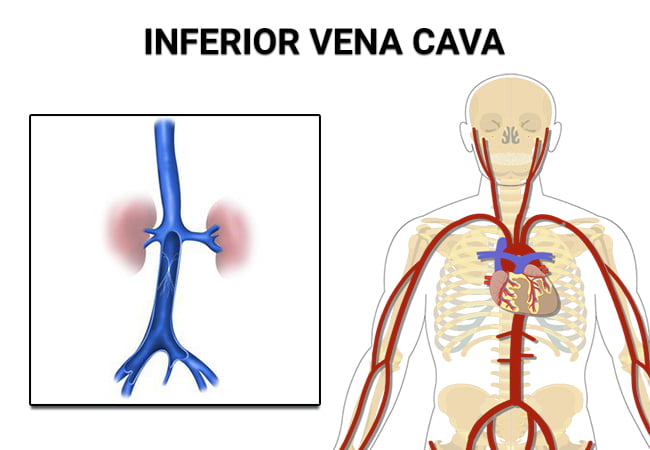
Your inferior vena cava (IVC) is a large vein that transports blood back to your heart from your lower extremities. If you develop deep vein thrombosis, a condition that causes blood clots in your legs and abdomen, your vein doctor may decide that you need a removeable IVC filter that prevents any clot from reaching your heart and lungs. Such an occurrence triggers a potentially deadly pulmonary embolism. Seek out an experienced vascular specialist in Brooklyn, NY and Bronx, NY for a definite diagnosis and strategies to protect your life, which may include an IVC filter. Call the Astra Vein Treatment Center today to speak with Dr. George Bolotin, a highly regarded vein doctor.
 Your inferior vena cava, the IVC, is the large vein responsible for delivering deoxygenated blood from the legs back to your heart. A filter placement procedure involves the surgical implantation of a tiny medical device into this large vein, which lies in the center of your body. The purpose of the filter is to prevent any blood clot from reaching your heart and lungs during a short surgery.
Your inferior vena cava, the IVC, is the large vein responsible for delivering deoxygenated blood from the legs back to your heart. A filter placement procedure involves the surgical implantation of a tiny medical device into this large vein, which lies in the center of your body. The purpose of the filter is to prevent any blood clot from reaching your heart and lungs during a short surgery.
If your vascular specialist in Brooklyn, NY and Bronx, NY thinks you’re at risk for a pulmonary embolism, it’s often recommended that a removable IVC filter is placed into your vein. If you suffer from circulation problems or other vein problems, you need guidance and assistance from a top vein clinic like the Astra Vein Treatment Center. Dr. George Bolotin, an accomplished Interventional Radiologist and the founder of this vein clinic, is one of New York City’s top vein experts.
If Dr. Bolotin diagnoses you with deep vein thrombosis (DVT),he may recommend an IVC filter placement. DVT is a blood clot in veins that are deep within your body. These clots often begin in your upper or lower legs and form through the thickening of your blood. If they reach your heart and lungs, it may result in a life-threatening pulmonary embolism.
You may need an IVC filter placement to protect your heart and lungs from blood clots from a number of concerns, not just from DVT. Whenever you’re at risk of a blood clot in your lower extremities, an IVC filter can save your life. Some of the conditions or lifestyle choices that can lead to blood clots include:
Before you undergo any procedure, you need a consultation. Dr. Bolotin gives you a physical exam, takes a medical history and then orders any tests he deems necessary to confirm your diagnosis. If he decides you need a IVC filter placement, he explains the procedure to you, including the benefits and risks, so you understand why you need it.
Once you’re ready, Dr. Bolotin performs the minimally invasive surgery. The procedure for a vena cava filter follows specific steps, including:
Until a short time ago, IVC filter placement was a permanent procedure. The filters had to be left in place even after the threat of a dangerous pulmonary embolism had passed. Thanks to advances in instrument design and surgical techniques, Dr. Bolotin can perform an IVC filter removal. Reasons for removing the device include:
To perform an IVC removal, Dr. Bolotin has a few options. The standard surgery reverses the implant procedure, going in through a vein to the device, grabbing it and removing it. This minimally invasive surgery requires you to be sedated, but it has been shown to be safe.
A laser IVC filter retrieval procedure is used when the standard surgical IVC filter retrieval is unsuccessful because it’s trapped or stuck. Using an endovenous laser ablation (EVLA) technique, Dr. Bolotin inserts a laser sheath into the vein, from which he employs laser heat to dislodge the filter. Once, loose, he removes it by pulling it out, just as in a standard removal procedure.
An IVC filter placement and removal procedure is a life-saving, minimally invasive procedure that helps thousands of patients each year. If you suffer from DVT or any other difficult vein condition, listen to your vascular specialist in Brooklyn, NY and Bronx, NY. Contact the experts at the Astra Vein Treatment Center to schedule an appointment.
Vein & Vascular Medical Care
4209 Ave U, Suite A.
Brooklyn, NY 11234
(347) 934-9068
Vein & Vascular Medical Care
869 E Tremont Ave
Bronx, NY 10460
(929) 447-4563